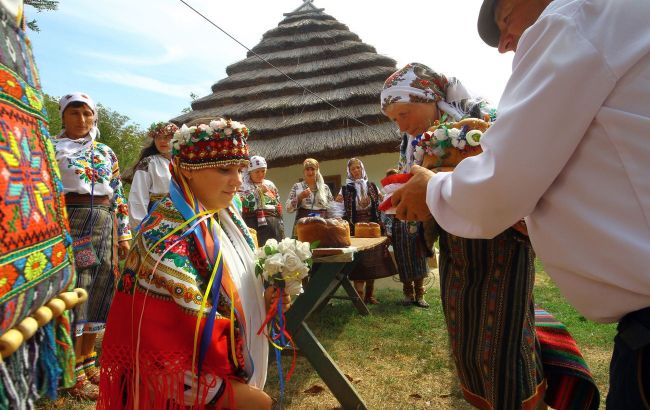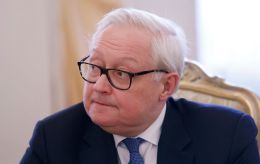Ancient Ukrainian wedding rituals: Meaning and what traditions survive today
 How our ancestors celebrated weddings in the past and which rituals exist today (photo: Getty Images)
How our ancestors celebrated weddings in the past and which rituals exist today (photo: Getty Images)
In Ukrainian culture, weddings were always more than just a celebration. They were a full ritual, rich with symbols, songs, and customs passed down through generations. From the first matchmaking visit to ceremonial bread and the baptism of godchildren, each stage had its own meaning, blessing, and song. Here's how our ancestors celebrated weddings and what each ritual represented.
Matchmaking: First step toward marriage
Everything began with matchmaking, a symbolic request for the bride's hand. Elders from the groom's family would visit the girl with a korovai (ceremonial bread) or a bottle of vodka, saying traditional phrases such as, "We have come from the Cossack to ask for bread and salt."
If the parents agreed, the girl would present embroidered towels as a sign of consent. A refusal meant returning a pumpkin, which became a popular saying in folk culture.
Engagement and preparation
After matchmaking, the families would arrange the wedding. Engagements were held, gifts were exchanged, and the bride began preparing her dowry.
During this time, ceremonial songs were sung, towels were woven, and wedding garments were sewn. A special event was the weaving of the wreath, a symbol of the girl's purity.
Wedding day: Rituals and symbols
Weddings typically lasted several days. The central ritual was the ceremony, which is considered a spiritual union of two families.
After the ceremony, the newlyweds returned to the parental home, where they were greeted with a korovai, a ceremonial bread decorated with viburnum and wheat ears.
In the evening, the ritual of "unbraiding of the braid" took place. It is one of the most touching moments when the bride says farewell to her maidenhood.
Then followed joyful dancing, singing, jokes, and celebrations that could last up to three days.
After the wedding: Godparents and godchildren
Some time after the marriage, the couple would baptize their first child and become godparents, spiritual parents to the children of friends or relatives.
In folk tradition, this was considered a way to strengthen family ties and continue the wedding lineage. Godparenthood emphasized the importance of spiritual unity and mutual support.
Symbols of a Ukrainian wedding
Each element of the wedding had meaning:
- Towel is the path of the couple's life
- Viburnum is love and fertility
- Korovai is prosperity and unity
- Wreath and ribbons are purity and feminine strength
- Music and song are energy that unites the community
Interesting fact
In some regions of Ukraine, wedding customs have been preserved almost unchanged, for example, in Polissia or Bukovina.
There, ancient ceremonial songs are still sung, korovai is baked according to family recipes, and a "wedding train," a column of decorated carts or cars accompanying the newlyweds, is arranged.
Sources: National Museum of Folk Architecture and Life of Ukraine, Drevo, Ukrainian Institute of National Memory.

